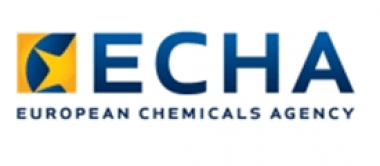Scientific research needed to protect health, the environment and competitiveness
The European Chemicals Agency (ECHA) has updated its report on Key Areas of Regulatory Challenge with new topics in line with the European Union’s Competitiveness Compass and the Clean Industrial Deal. Specific scientific research is needed to better protect people and the environment from hazardous chemicals and to develop balanced and effective regulatory measures.
The report introduces new topics to reflect ECHA’s growing responsibilities. It also covers emerging topics in waste and recycling that aim to support circularity and enhance Europe’s industrial competitiveness.
For example, more specific research is needed on:
- chemical emissions and exposure from the waste stage of materials to help create more accurate emission estimates to avoid potentially over-conservative regulatory measures;
- recycled non-fossil fuel resources, to improve our understanding of their hazards and support EU policies that aim to reduce pollution and promote sustainable growth; and
- the valuing of environmental impacts to assess the effectiveness and proportionality of chemicals regulation and specific regulatory actions under, for example, REACH and the Batteries Regulation.
Dr Sharon McGuinness, ECHA’s Executive Director, said:
“Since ECHA’s first report in 2023, we have seen important, regulatory-relevant scientific research get underway. For example, new research has been initiated on developing analytical methods to detect and measure PFAS for use by enforcement authorities and on generating monitoring data on a specific phthalate that is a chemical of concern.
“Our updated report reflects the European Commission’s Clean Industry Deal and Competitiveness Compass, by inviting more specific research to support the circular economy and innovation in Europe.”
Other research needs added to the report include developing better methods to monitor chemicals in water environments, such as rivers, lakes, and oceans, and how chemicals can contaminate drinking water from materials that come into contact with it.
Background
The Key Areas of Regulatory Challenge report is part of an evolving research and development agenda aiming to support and inspire the research community. The list of research needs is not exhaustive. The report reflects ECHA’s current priorities, including the Agency’s new tasks. It was originally developed to support the work under the Partnership for the assessment of risk from chemicals (PARC).
PARC is a seven-year EU wide research and innovation programme under Horizon Europe which aims to advance research, share knowledge and improve skills in chemical regulatory risk assessment.
ECHA’s role in PARC is to ensure that the funded scientific research addresses current regulatory challenges related to chemical risk assessment and adds value to the EU’s regulatory processes.
European Chemicals Agency ECHA



























